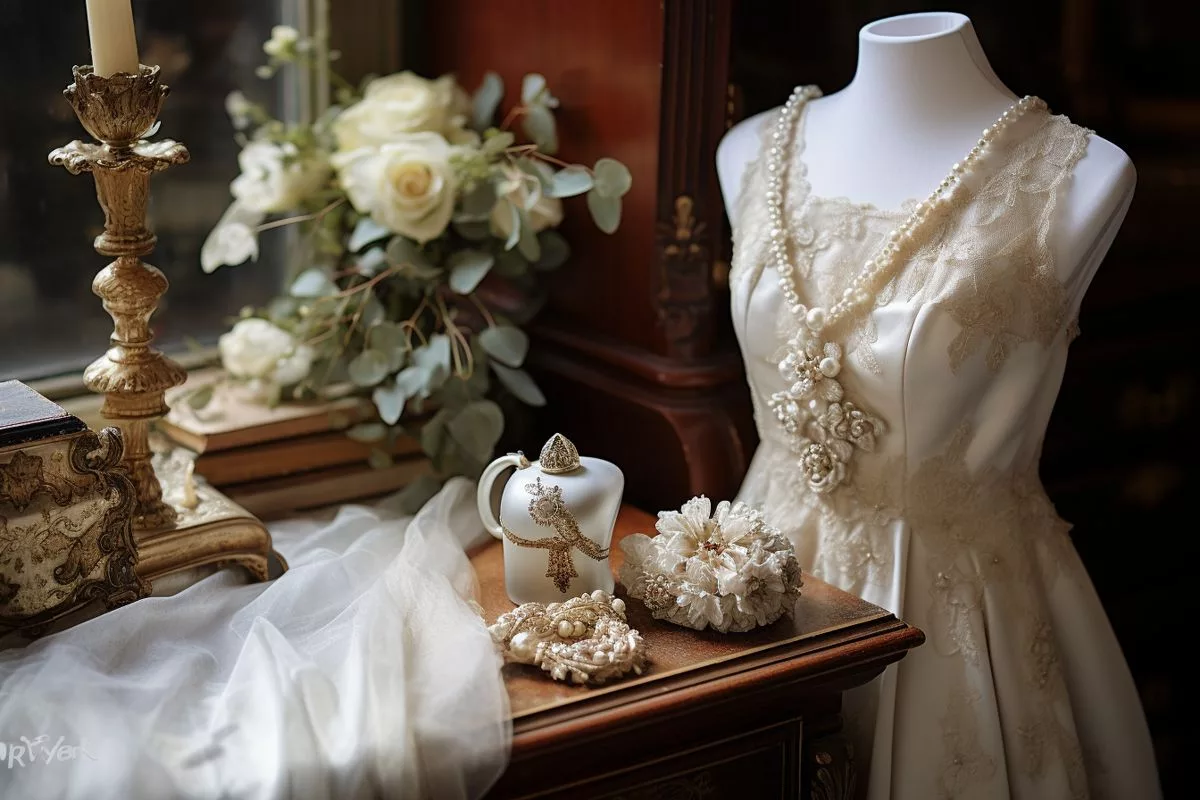“The Hesitant Fiancée,” a painting from 1866 by French artist Auguste Toulmouche, has gone viral on TikTok, showcasing the enduring power of art to connect with modern audiences. The painting depicts a young bride dressed in Victorian attire, with a defiant expression ranging from contempt to fury. Its recent popularity on TikTok has led to comparisons with Phoebe Waller-Bridge’s “Fleabag,” as both feature female protagonists breaking the fourth wall to confront their struggles. The painting’s newfound fame reflects the timeless ability of art to reflect and transcend human emotions and experiences.
How did a painting from 1866 end up going viral on TikTok?
“Toulmouche’s artwork showcases a defiant, young would-be bride, dressed in extravagant Victorian attire, staring straight at the observer with an expression ranging from contempt to fury. The dramatic accompanying score, Verdi’s Requiem Dies Irae, on TikTok amplifies the intensity of the painting, solidifying its image as a quintessential display of female wrath.”
Discovered Gem of the Digital World
The digital era sometimes unexpectedly brings forgotten masterpieces back into the limelight. Case in point, the recent reemergence of a 1866 painting by French artist Auguste Toulmouche titled “The Hesitant Fiancée” on the globally recognized social media app, TikTok. This example clearly demonstrates that despite changing times, the fundamental human emotions encapsulated in artwork continue to engage audiences.
“Toulmouche’s artwork showcases a defiant, young would-be bride, dressed in extravagant Victorian attire, staring straight at the observer with an expression ranging from contempt to fury. The dramatic accompanying score, Verdi’s Requiem Dies Irae, on TikTok amplifies the intensity of the painting, solidifying its image as a quintessential display of female wrath.
Modern-day women find this painting profoundly relatable, adding their personal interpretations, and transforming the artwork into a current representation of female exasperation. Observations such as “You look so unapproachable,” and “It’s probably because men are intimidated by you” underscore modern perspectives of the bride’s refusal, underlining the painting’s persistent pertinence.
The Artist and His Unusual Creation
A prominent figure in the romantic school of art, Toulmouche was celebrated for his fashion-centric paintings. These artworks encapsulated the grandeur and splendor of 19th-century Parisian salons. His creations showcased luxurious attire, elaborate furnishings, and the opulent interiors of high society homes. A contemporary of the Impressionists, Toulmouche was pivotal in connecting Monet with other upcoming artists of that era.
However, “The Hesitant Fiancée” is a marked departure from Toulmouche’s conventional work. The dramatic composition of the painting emphasizes the room’s height and its extravagant setting, establishing a theatrical ambiance that evokes a stage setting. The bride’s audacious glare, unlike the mild, modest women commonly depicted in fashion paintings, breaks the fourth wall, signifying her rebellion against matrimony as a core theme.
The artwork’s newfound fame on TikTok has led to comparisons with Phoebe Waller-Bridge’s acclaimed TV show, “Fleabag.” The series’ frank, honest female lead frequently breaks the fourth wall with a direct stare into the camera, termed the “Fleabag stare.” This confrontational gaze forces the viewer to recognize her struggles, reminiscent of the rebellious bride in Toulmouche’s painting.
Art Crosses Boundaries: Now and Then
The painting, through the TikTok trend, has been integrated into modern conversations about female discontent and opposition. Much like the young Parisian women of 1866 who might have felt understood by “The Hesitant Fiancée,” today’s women are reflecting their own experiences of annoyance and anger through this painting, underlining the timeless power of art to reflect, connect and transcend human emotions and experiences.
In short, the reemergence of Toulmouche’s “The Hesitant Fiancée” on TikTok exemplifies how art can traverse time and space, finding relevance in fresh and surprising scenarios. It attests to the everlasting pertinence of art, its capability to mirror, provoke, and inspire, irrespective of the era in which it was crafted.
1. How did a painting from 1866 end up going viral on TikTok?
Toulmouche’s artwork, “The Hesitant Fiancée,” went viral on TikTok due to its dramatic composition, which emphasizes the room’s height and extravagant setting, as well as the bride’s audacious glare and defiance against matrimony. The dramatic accompanying music, Verdi’s Requiem Dies Irae, amplifies the intensity of the painting, making it a quintessential display of female wrath.
2. Why is “The Hesitant Fiancée” relatable to modern-day women?
Modern-day women find the painting relatable because it showcases a young would-be bride, dressed in extravagant Victorian attire, staring straight at the observer with an expression ranging from contempt to fury. Observations such as “You look so unapproachable,” and “It’s probably because men are intimidated by you” underscore modern perspectives of the bride’s refusal, underlining the painting’s persistent pertinence.
3. Who is Auguste Toulmouche, and what is his usual style of art?
Auguste Toulmouche was a prominent figure in the romantic school of art, celebrated for his fashion-centric paintings. His creations showcased luxurious attire, elaborate furnishings, and the opulent interiors of high society homes. He was pivotal in connecting Monet with other upcoming artists of that era.
4. What is unique about “The Hesitant Fiancée” compared to Toulmouche’s usual style?
“The Hesitant Fiancée” is a marked departure from Toulmouche’s conventional work. The dramatic composition of the painting emphasizes the room’s height and its extravagant setting, establishing a theatrical ambiance that evokes a stage setting. The bride’s audacious glare, unlike the mild, modest women commonly depicted in fashion paintings, breaks the fourth wall, signifying her rebellion against matrimony as a core theme.
5. What is the “Fleabag stare,” and how is it related to “The Hesitant Fiancée”?
The “Fleabag stare” refers to the direct stare into the camera by the frank, honest female lead in Phoebe Waller-Bridge’s acclaimed TV show, “Fleabag.” This confrontational gaze forces the viewer to recognize her struggles, reminiscent of the rebellious bride in Toulmouche’s painting, who also breaks the fourth wall with her audacious glare.
6. What does the reemergence of “The Hesitant Fiancée” on TikTok demonstrate about the power of art?
The reemergence of Toulmouche’s “The Hesitant Fiancée” on TikTok exemplifies how art can traverse time and space, finding relevance in fresh and surprising scenarios. It attests to the everlasting pertinence of art, its capability to mirror, provoke, and inspire, irrespective of the era in which it was crafted.












